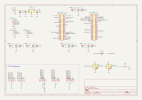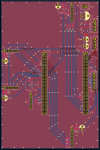Well, yes, they are kernel extensions from 3rd party developers. So obviously these will have access privileges. So by default, Apple only allows its own kernel extensions. It's a matter of trust really. Installing new extensions cannot be done without user consent, so you'll always know what is installed.Thank you, yes I have seen and read it before. I am a MS guy since 286 era and am realatively new to Mac. Basically they are saying, as every software vendor would say, "that's fine, yeah, totally ok, go ahead and change it" which was not really exuding confidence , so I checked Apple support which reads:
Kexts have the same privileges as the kernel, and thus any vulnerabilities in third-party kexts can lead to full operating system compromise.
Same privileges as kernel is the part I gave up. Maybe you know more than I do - do you think it is fine?
I've been running Soundsource for quite a few years, and never had any issues whatsoever.



